-
Posts
938 -
Joined
-
Last visited
-
Days Won
30
Content Type
Profiles
Forums
Events
Gallery
Store
supertorial
Classifieds
Posts posted by chicote
-
-
Just got a job bartending at a somewhat fancy place, and am looking for some recommendations of places to get clothing for the environment. As reference, they looked at my grandfather’s ‘60s silk tie I was wearing during the interview and critiqued it because it has a couple worn spots along the folded edges, so I have a feeling a lot of true vintage garments are going to be off the table. I like Freewheelers-style trousers, higher rise and looser leg, ideally cotton or linen, no synthetic materials, in somewhat neutral colours. Also looking for dress shirts - the known brands here produce a lot of “work” shirts; unfortunately I feel they’re a bit casual. Some Bubo shirts, Stevenson shirts, etc look like they work but I have had a really hard time tracking things down that are in my size. If anyone can recommend a few brands or stores to look at I’d be really grateful. Thank you!
0 -
@Broark I lived in Albuquerque for a couple years and know Santa Fe & the surrounding area decently well… pm me if u want any more detailed recs. But for starters I have to recommend Jambo Cafe in southern Santa Fe, amazing pan-African foods, and always a really beautiful family communal vibe inside. Bring ur 1890s repros if you want to do some miner cosplay and I can send you pins of some ghost towns & mineshafts in the area! And def make it out of town to cerrillos and abiquiu. plus I heard there’s a standard and strange in Santa Fe, I never went there but maybe worth checking out. Have fun!
edit: omg, go to tinkertown museum. it’s this crazy place all made by one dude over the course of his life, stucco & homemade cement layered with beer bottles & salvaged old-western detritus on the outside, and on the inside several dozen unbelievably elaborate miniature scenes from 19th-early 20th century us history, from mining towns to carnivals, plus all kinds of other wild folk art stuff. these are some really bad pictures from it… really u should just go and see for urself, pics do not do any justice…
6 -
@Double 0 Soul I paid $200 incl shipping from malaysia, which looking around seems about average for m series jackets in this condition. it certainly smells like it’s been in storage in a tropical country for 20+ years lol!
2 -
- Popular Post
- Popular Post
-
- Popular Post
- Popular Post
M11026 came in. I love it!
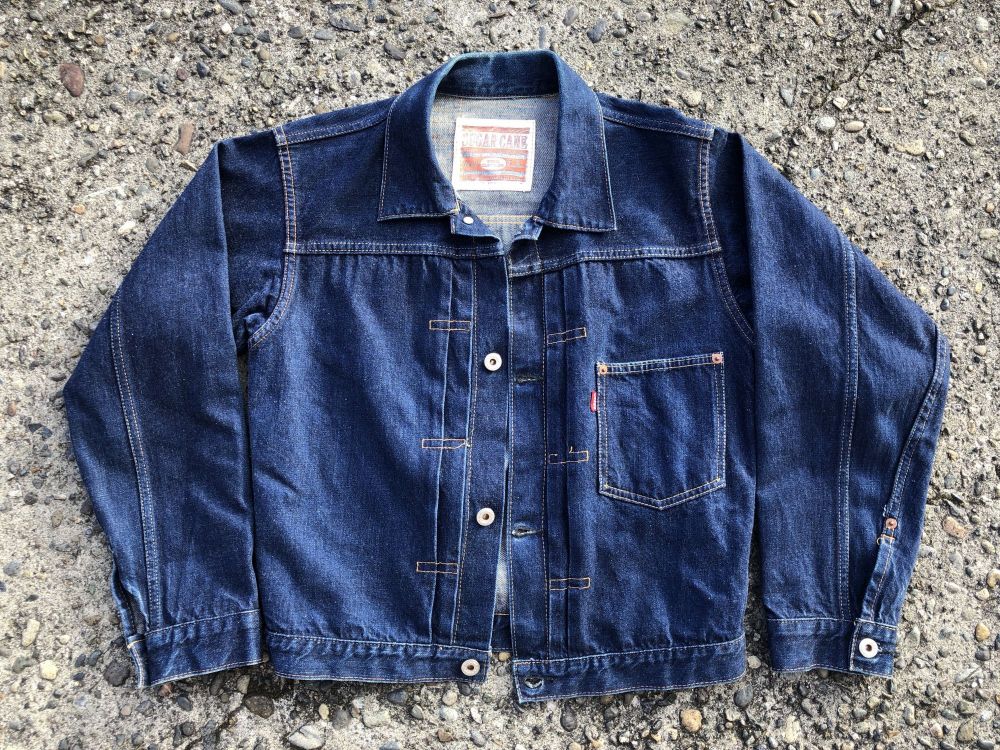
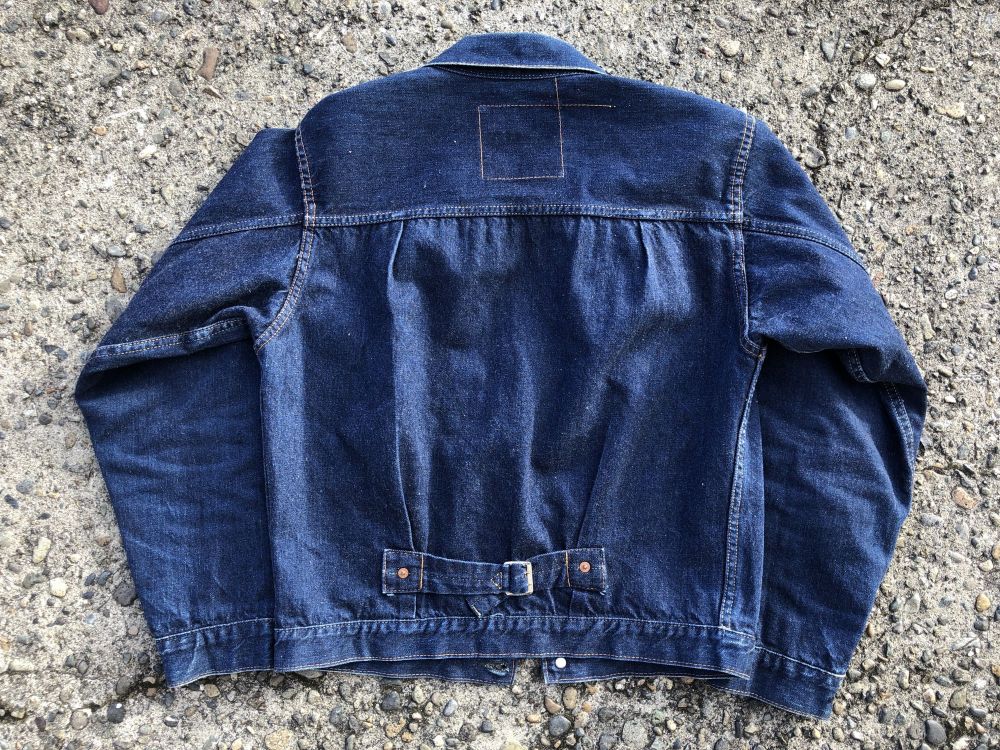
One broken box stitch… I think I might break em all!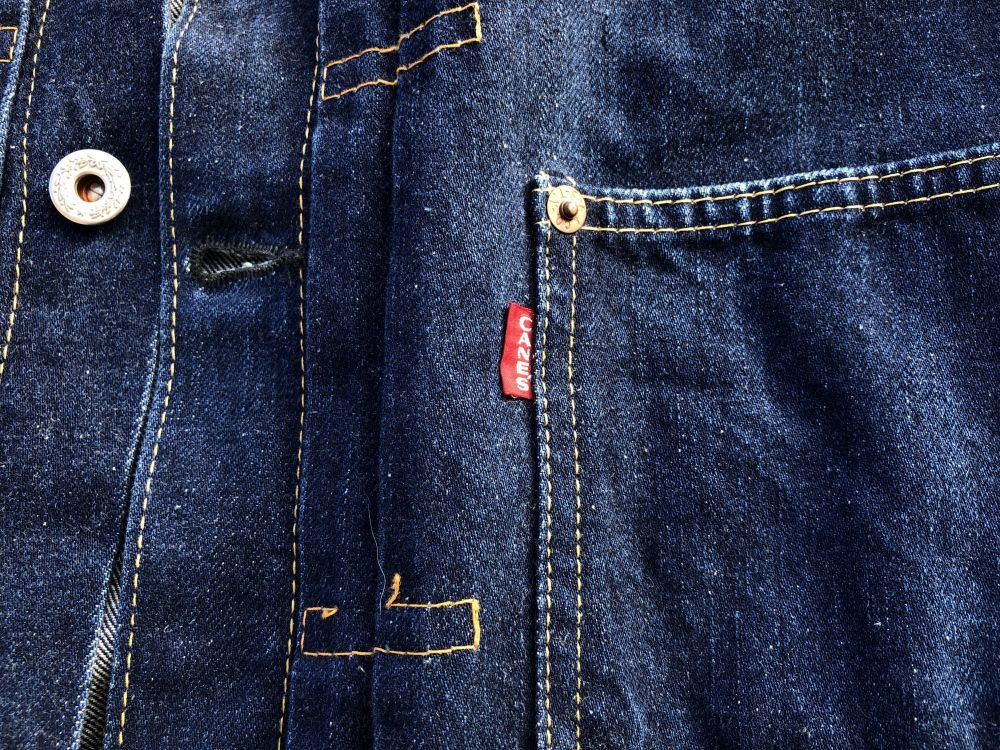
absolutely beautiful donut buttonsand this cool cloth patch.
I really like the denim, I feel like “nep” is one of the last things I look for in a fabric, but this has quite a lot of it:
some details of the cinch:and a quick fit pic. Sleeves are on the slightly shorter side but I don’t mind, this is going to be a spring/summer jacket anyway.
thanks for looking!
24 -
My m41101s have “S” buttons, and if I remember right, my old slack denim 40601s had 00 buttons, though I know those were from many years past 2000… is that possible? I’ll try and find some pictures to make sure.
0 -
Thanks to both of you!! Looks like the m41328 are blue jeans under the black rayon coating? A little too weird to spring the cash for, but I’m glad to know about them.
And appreciate the info about the 13oz denim, I’ll do some reading about the m41030 then and update if I come up w anything new. Thanks!
0 -
Just purchased an M11026 jacket in very good used condition, it’s coming from Malaysia so will probably be a few weeks before it arrives. In the meantime, I’m wondering if any of the sugarcane experts here can say anything about the 13oz “extra heavy coarse weave” denim used in the jacket. I know 13oz isn’t quite “heavy weight” denim anymore but am hoping to use this as a work and motorcycling jacket come spring, and hopefully take the place of my thrashed Tenderloin carhartt repro. What relationship does the 13oz denim have to the 14oz “coarse weave” denim used in the M41001 (which I know has at least served @Double 0 Soulnicely in a work application)? I’ll be sure to publish my own findings when the jacket arrives; until then, thanks for any information!
edit: also wondering if anyone knows about the m41328 jeans? they are a black denim and they look m nice, but the seller claims they are 70% cotton and 30% rayon and I’m not sure if that sounds good or not lol.
0 -
siiiick!!!!
1 -
That jacket’s so perfect for the snow @CSL!
2 -
I get the sense that @Talan is a deeply analytical and categorical thinker, based on his observation above as well as in other instances on the forum (I remember him making a recent observation —paraphrasing here— that you can, technically speaking, avoid consuming solid food as you can consume sufficient calories by drinking alcohol).
I have a family member who thinks and speaks in a very similar way, and who can sometimes be ostracized in social situations by being perceived as needlessly antagonistic or frustratingly difficult to understand. However, I’d like to believe that many of the stances people who think this way take are well thought-out, even though they may not make immediate sense to people around them.
If any of you are familiar with Data from Star Trek, that might be a good analogue: he is usually always thinking about things deeply ‘logically’ and categorically, and is often used as a gag to show how out-of-touch his thinking is with the rest of his crew members, but just as often his way of thinking is crucial to getting the others to see something they might not see otherwise.
I’ve been thinking a lot lately about how vast and expansive the human mind is, and how impossibly many different ways each of our minds can develop; how we learn to socialize, to address problems, to connect ideas and process traumas, these are affected not just by the culture we grow up in and the education we are afforded but also by subtle differences in the chemical compositions of our brains and our genetics, foods we have access to as infants, environmental hazards we’re exposed to and so many other factors that we are all still discovering as a species.
And yet, in modern, Western capitalist society, there are certain few “modes” of thinking which are celebrated and valued above others. Deeply focused, traditionally educated master tradespeople, as we all know, are dying off and not being replaced; instead, our schools and universities prioritize creative, abstract thinkers who are “well-rounded” and able to “multitask” — at the same time that as a society, our attention span is plummeting and diagnoses of attention disorders are skyrocketing. And yet other types of “creative” thinkers - artists, poets, writers - are systematically losing significant portions of funding and support from educational institutions, from elementary education on up.
In the last ten or so years, I’ve known a significant number of people, mainly adults, receive diagnoses of autism or one of the related diagnoses that are on “the spectrum”. Overwhelmingly, these people are quite successful: they are engineers, mathematicians, carpenters and machinists, or work in related fields.
Generally speaking, for these people, their diagnosis does not seem to carry the stigma it did even a decade prior, when I was in elementary school and our class was segregated into the “gifted program”, those in need of “special attention”, and everybody else. The hierarchy of attention and value in these classes didn’t need to be spelled out to us, even as first-graders.
I’m glad that things today aren’t what they were then, as our society is starting to recognize that people do not need to fit a singular model of “success” or “sociability” to be happy and make positive contributions to their communities.
I’m glad particularly because I can remember how these students who were placed in the “special attention” tier were treated: with strict rules and surveillance by the schools, and cruelty or ignorance by us students. And yet, maybe all these students needed was an outlet for their explosive energy, or a long-term project or complicated problem to focus their analytical mind. Maybe many of us in the “regular” class could have benefited from such an opportunity also, but we “fit in” too well to warrant the attention. And maybe many of the “gifted” students might also be neurodivergent in their own ways; their differences just happened to have been noticed in a more encouraging and celebratory light.
I think it’s also worth mentioning that some of the types of thinkers who are accepted, popular and successful in our society also expose the cruelty and exclusivity of our current system. (It’s shocking to read about the numbers of diagnosed “sociopaths” populating the executive levels of the global corporate elite.)
All this is to say that, our brains all have their own wildly individual characteristics, and our ways of understanding each individual’s cognitive function all depend on the values of the society or community that we grow up in. (And certainly nobody needs to be “diagnosed” to be accepted and understood!) Perhaps we are all more or less a group of like-minded individuals here, but I’d wager that we are all inherently a lot more different than we are alike, and that our respective adaptations to our society’s pressures have gotten us all to the point where we can pretty well get along. Plenty of people have come to this community in the decade I’ve been part of it who just haven’t fit in, and there are a handful who are pretty memorable among them. My hope is that, one day, we can get to a point where none of us have to watch or restrict what we say or how we think to such an extent, and where none of us, broadly speaking, have to feel ashamed for the way we are.
8 -
Wow, that’s a beautiful jacket. I’d love to see it with some more wear if you can fit it in, it deserves it!
1 -
-
I like the pre-cut and sewn clothing everyone’s so excited about here, you wouldn’t believe how much of a time saver that is!
12 -
- Popular Post
- Popular Post
Hi everyone, wanted to share an update on my jacket in case anyone’s curious. I decided to go the DIY boot polish route to obscure the sandpaper marks on my jacket, and after some research went with Collonil’s Colorit conditioner. I applied a bit on an arm last night to test the tint and colourfastness and was pretty happy with the result. The dye gives the leather a really nice sheen, but nothing overly artificial or new-looking, and I think the textural patina of the leather shows through just fine while hiding the visible sandpaper marks… even though I was just starting to get used to them, lol. I went to colour the rest of the jacket today and took some before/after photos.
Untreated:
After application and about 15 minutes’ dry time:
Contrast between freshly applied conditioner on the chest panel and the untreated arm:
The sandpaper marks are hidden pretty well by the conditioner - hopefully further conditioning with uncoloured cream will blend them in further.
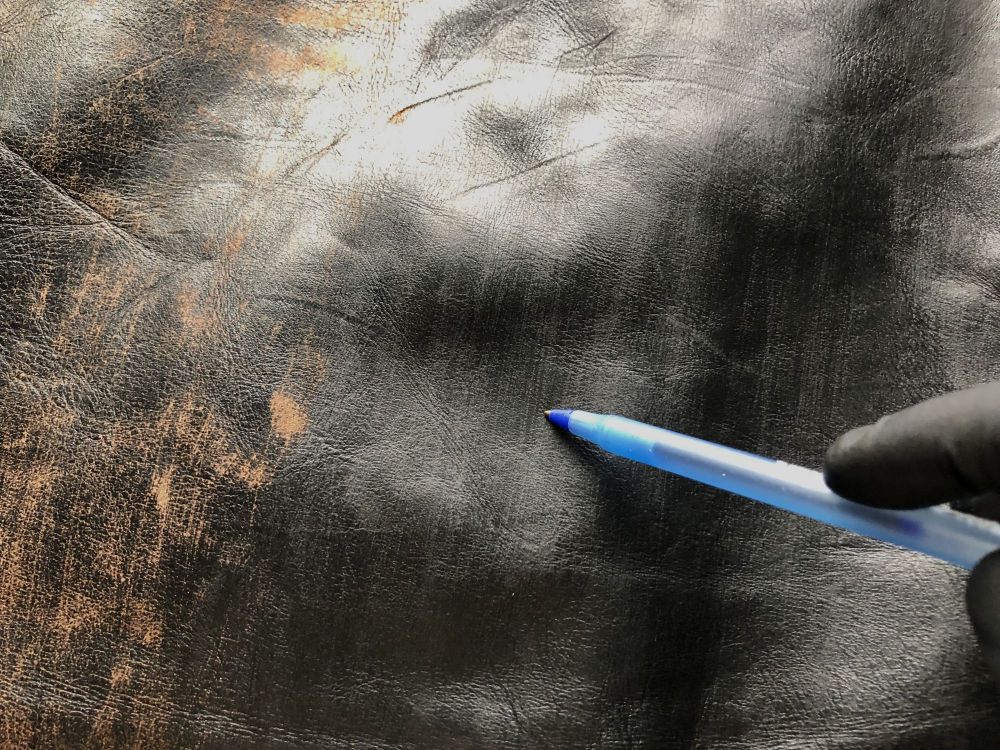
and here’s the product I used:
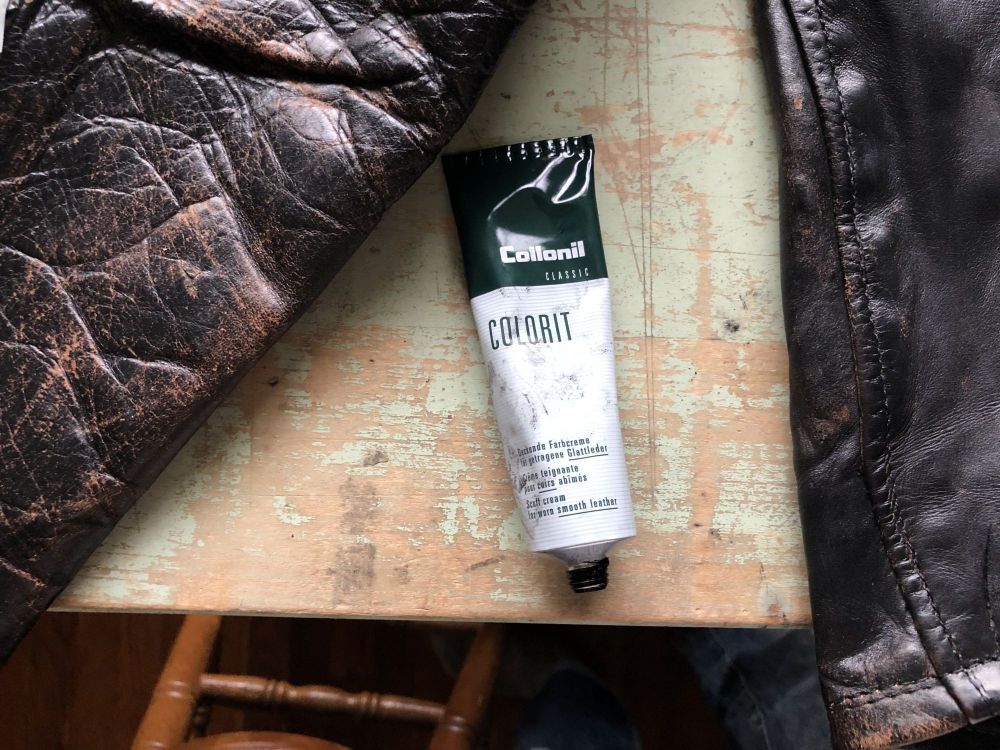
thanks for looking!
21 -
That was really nice to look through, thanks 00!
1 -
My thoughts on this have changed a lot over the last few years. While I do think that in any instance of cultural exchange it’s very relevant (perhaps more than anything else) to consider the colonial & imperial power imbalance between the two cultures, I think that traditional cultural objects—like jewelry, pottery, beadwork, etc, from indigenous cultures all around the world—and the living artisans who still produce and sell goods made traditionally need to be supported more than ever, along with traditional storytellers, holders of language, and shamans / witches / curanderos or whatever word you’d like to use for a holder of spiritual knowledge.
It reminds me, in a funny way, of a John Berger documentary I watched several years ago, and then again a few weeks back, called Pig Earth (an old BBC channel 4 special). It’s about a number of years he spent living in a peasant village in France in the 70s, and what he learned to appreciate about the peasant way of life that he believes contains essential knowledge for those looking to return to a way of life more connected with our ancestors and with the earth. The first time I watched it, I felt he was being hopelessly nostalgic - something he even discusses feeling himself towards the end of the film. But more recently, I really understood the urgency of his message. Peasant life, and the hundreds of generations of ancestral wisdom, storytelling, craftsmanship and magic it encompasses, is one of the most fragile cultures in existence in any society, all around the world. It lives and dies with the people who carry on its traditions. As Berger illustrated, even back in the 70s, all but one young person from the village he inhabited had left the mountains for the city, leaving the town to crumble and decay beneath its aging population. In our present economic condition, this can happen in one generation.
It’s one of the saddest memories I have from my time in the Ecuadorian Amazon five years ago, sitting under a massive, four hundred foot long casa comunal built from etched tree trunks and a thatched two-foot-deep roof made of woven palm fronds, observing a few dozen Shuar elders sitting together on one side, drinking chicha, barefoot, with their faces painted, joyfully telling stories they’d learned from their ancestors to one another in their native tongues — and on the other side, three dozen young kids, 5 to 15 years old, roughly, in sneakers and skinny jeans, hunched over cell phones playing some call of duty style war game in total silence. I feel so heavily impacted by that memory and consider it essential to the way my thinking has evolved around the topic of “cultural appropriation”. Rather, I think anybody interested in a culture, not for money or clout but out of genuine admiration and respect, needs to be encouraged and celebrated in pursuing whatever their interest leads them to.
It’s an entirely different matter when H&M or Target starts selling stolen indigenous designs, obviously, but I think it’s equally pernicious that them and other large companies have made conditions such that the craftspeople and artisans who originated these designs have a dwindling number of people to pass their knowledge onto. And that’s something that I believe deserves equal attention when we talk about cultural exchange — that the overall attrition of economic and social power is forcing these deep, rich, beautiful cultures —that we’re supposed to be ashamed to show interest in — completely out of existence.
anyway, here is that John Berger movie if anyone’s interested. It’s really worth watching, if just for the storytelling and photography alone!
10 -
One of the most extraordinary voices ever!
0 -
Thanks so much for the feedback, you guys. I am thinking of going the DIY boot polish route, at least to start. Three coats of Saphir Reno soaked nicely into the leather but didn’t make any noticeable difference in the colour of the abraded areas. I’ll look into the Collonil product that attractions carries; I’ve heard really good things about one of their leather care products in a green jar (called diamante something? Maybe?) but have no firsthand experience.
0 -
Where I am living in the US, even at this point in the overinflated vintage market, I come across vintage, made in USA Type III jackets somewhat regularly in vintage stores for between $35-75 depending on condition. As such, I wouldn’t pay $45 for a non vintage jacket personally, but again, value is subjective.
If you’re looking for a piece you’d plan to resell or show off to vintage denim collectors, this isn’t a good choice. But if you just want something to wear and find the unique details of this piece make it worth it to you, then don’t let us dissuade you!
As for durability, between a new-ish Chinese made jacket and a 40+ year old vintage one, I might still give a slight edge to the vintage one, but that’s only because I know the denim will hold up. If the denim of the jacket you’re looking at is too flimsy it might wear through the elbows or tear a seam sooner than a vintage jacket would. But I am just speculating, and have no idea what sort of fabric is on the jacket you have.
2 -
We have a community sale thread here, but otherwise I’d probably recommend the app Grailed - it has the broadest reach for brands like Kapital that bridge over into high fashion a bit.
0 -
That sounds amazing. I’m in western Washington now but have some friends in the cascades who have a similar hope this winter. The goat became several meals because I didn’t realize I’d end up with about 35 pounds of edible meat… I learned from cooking alongside some achuar chefs in the Ecuadorean Amazon to make really rich broths with the blood, organs and ribs, so made a sort of improvised ground nut stew with potatoes and chard, then later made an osso bucco with the shanks, the front legs I roasted and most of the rest ended up getting frozen and then given to my neighbour a few months later… don’t remember what he made but he fed a dozen people with it! I’d love to see what you end up making with the rest of your venison whenever you get around to it.
4 -
^That’s amazing!! I attempted to butcher and roast a whole goat last december for some friends who were coming into town - needless to say, it was exhausting, both because it was gruesome and extremely difficult. gave me a lot of respect for the study and care that knowledgeable butchers devote to their craft… and got me to invest in a good whetstone for my knives, lol. Thank you for sharing and enjoy your meals!
4 -
Got a question for you all…
I just picked up this really nice 60s horsehide jacket off of yahoo auctions. The listing mentioned that the lining had been replaced and that the rest of the jacket had “general wear”. There weren’t any super close up photos of the wear, but from the overall shots I thought the patina looked nice and so sprung for it. And besides that, it was the first jacket I’d found in weeks of searching that had exactly the measurements I was after.
I’m really happy with the fit, at least.
The problem is that when I got the jacket and was able to look it over in person, I realized that the “patina” the jacket has was largely made by sandpaper. I confess to having been ignorant of the fact that people actually did shit like this, but I guess given what people were doing to their raw denim 15 years ago (and the many instances of sandpaper-“fading” denim in Japan over that same time) i should have been on the lookout for it.
Anyway, I will still wear this jacket as is, but I’d really like to figure out some way to polish the sandpaper scuffs out of the leather. They’re not deep, but they’re really obvious in person and i don’t want to give the impression that I might have done this “fading” myself, lol. I’d rather polish or dye the whole jacket black and start all over than have the wear that’s currently on it. If anyone has any thoughts or suggestions on what to do, I’d really appreciate hearing. Here are some close ups - again, photos don’t show the scratches nearly as well as they show up in real life.
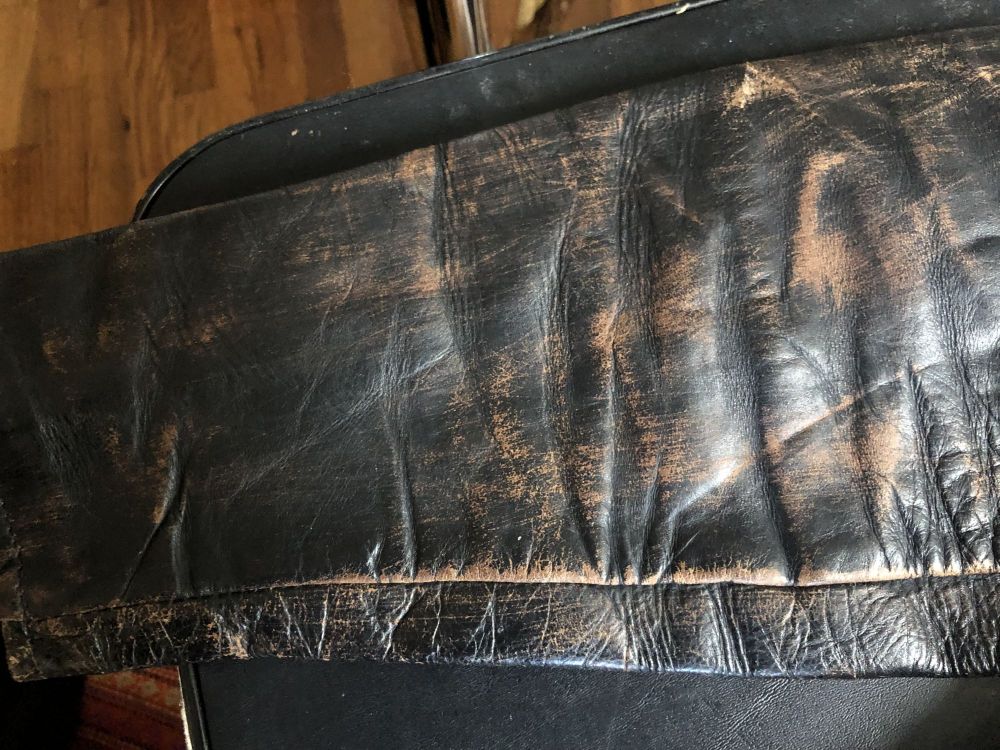
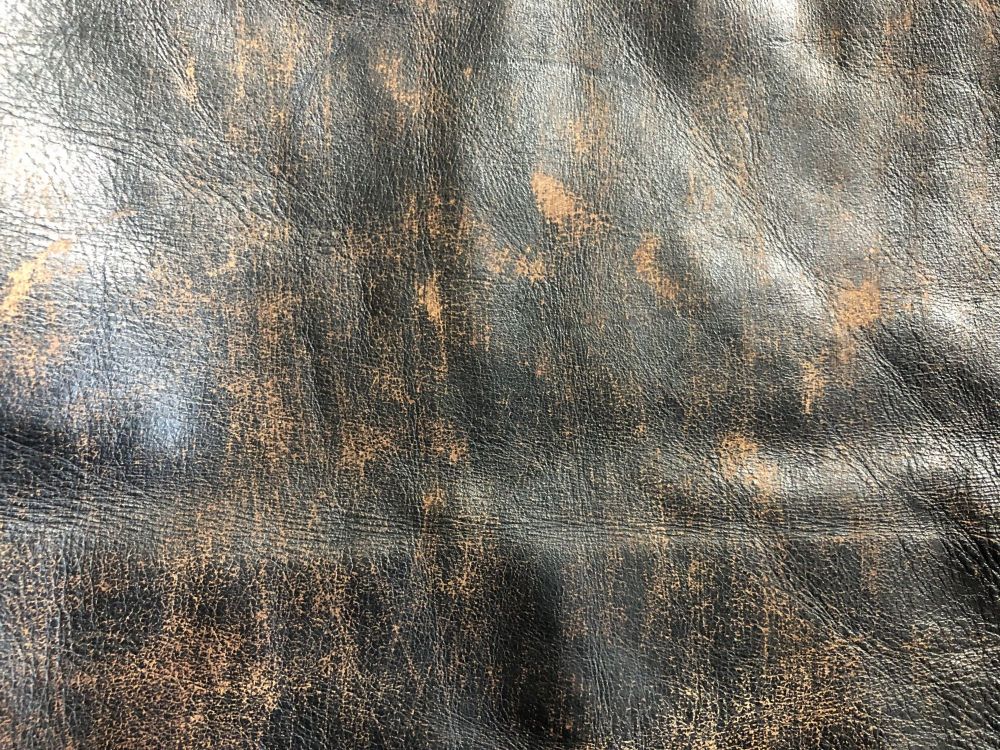
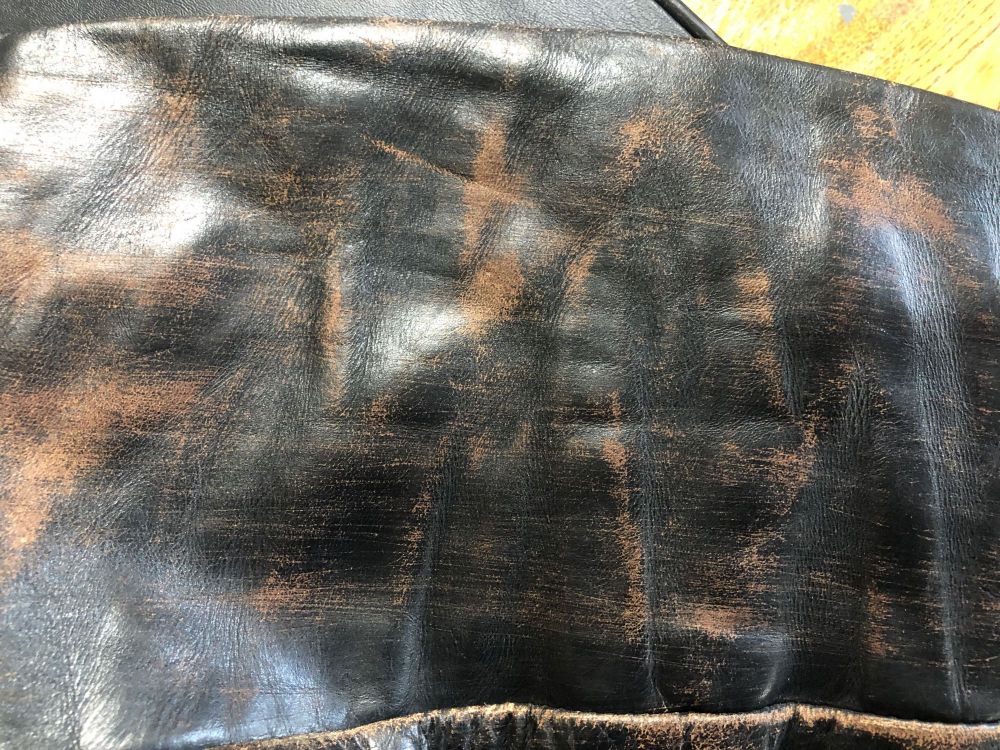 3
3


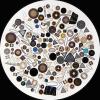


























SUPERDENIM SMALL QUESTIONS THREAD (Use instead of making new threads)
in superdenim
Posted
Thank you all so much! I got a couple of belafonte pieces, some older stevenson shirts and got a good deal on some freewheelers trousers off yahoo auctions. definitely interested in django atour but they were sadly out of stock in my size in most of the pieces that i liked the look of. really appreciate the recommendations!